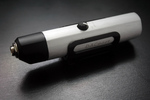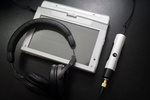- Joined
- Aug 18, 2007
- Posts
- 17,452
- Likes
- 839
Quote:
On a PC, if you leave the DACport settings at 24/96, I assume that when you play a 16/44 file that the Windows OS up-samples the audio stream to 24/96 to then pass it out of the USB port that way. Is that correct?
My understanding has always been that the Mac OS combined with iTunes will do a very nice job up-sampling the 16/44 music to 24/96 to send to the optical or USB port if the "Audio MIDI setup" is set for 24/96. I just don't know about the PC. Is all that correct?
Also, I do know in the Mac that every time you unplug a 24/96 optical DAC that the OS will reset it to 16/44 when you plug it back in. So, each time you plug in a 24/96 optical DAC you have to open Audio MIDI setup and change it to 24/96 again, where it will stay till the next time you unplug it. I assume the DACport will be treated the same way.
| Originally Posted by mgoodman /img/forum/go_quote.gif Thanks for the positive comments. DACport gives you this option because it can play 24/96 files natively. This type of performance is rare and so Windows is not sure if you really want it -- funny how that is... Of course you want it! My recommendation is to leave the settings at 24/96 - you will preserve the entire 24 bits of resolution and keep the noise down. If you are listening to 24/96 material it's especially important. If you are listening to 16/44 material it's still important. Here is why: Resampling (converting) your 24/96 content down to 16/44 by the Windows audio driver will introduce some noise and distortion due to mathematical manipulation of the audio stream as it gets converted "on the fly". Microsoft says that their conversion math is "flawless". I happen to know and respect the people on the Windows audio driver team, but... we all know that nothing is ever "flawless", so better to leave your audio alone 
Michael |
On a PC, if you leave the DACport settings at 24/96, I assume that when you play a 16/44 file that the Windows OS up-samples the audio stream to 24/96 to then pass it out of the USB port that way. Is that correct?
My understanding has always been that the Mac OS combined with iTunes will do a very nice job up-sampling the 16/44 music to 24/96 to send to the optical or USB port if the "Audio MIDI setup" is set for 24/96. I just don't know about the PC. Is all that correct?
Also, I do know in the Mac that every time you unplug a 24/96 optical DAC that the OS will reset it to 16/44 when you plug it back in. So, each time you plug in a 24/96 optical DAC you have to open Audio MIDI setup and change it to 24/96 again, where it will stay till the next time you unplug it. I assume the DACport will be treated the same way.








